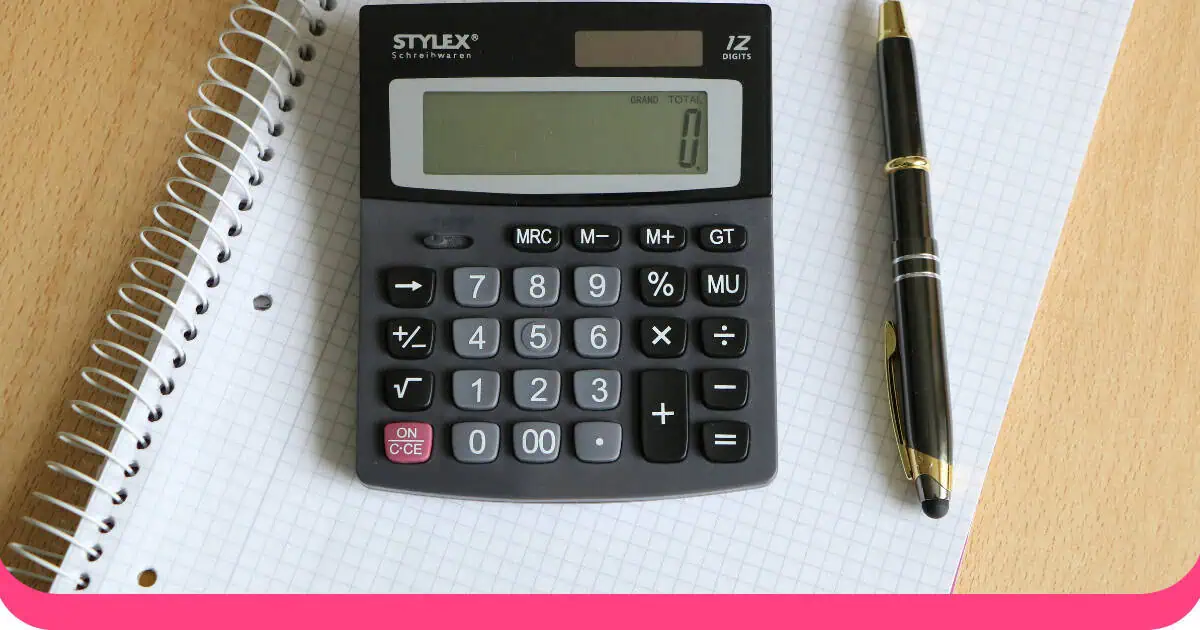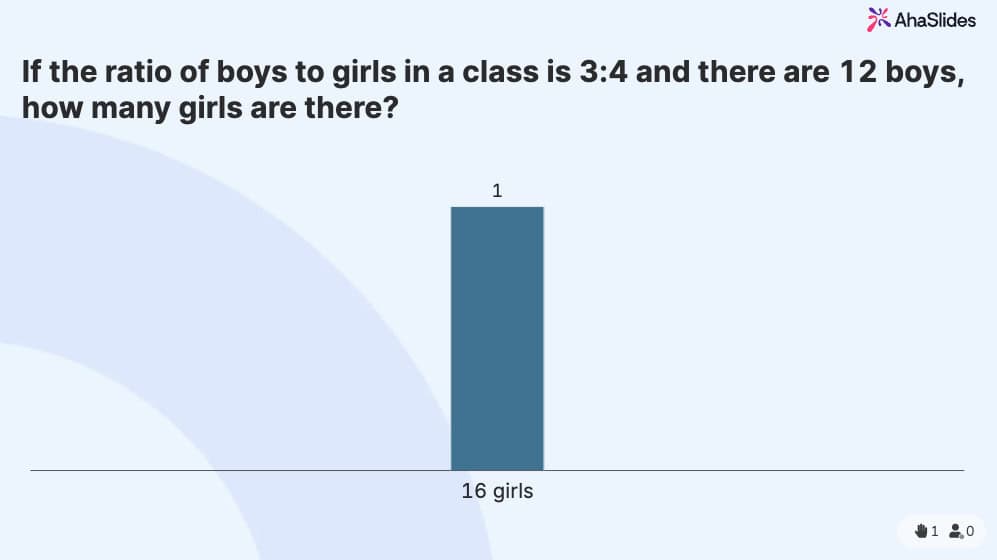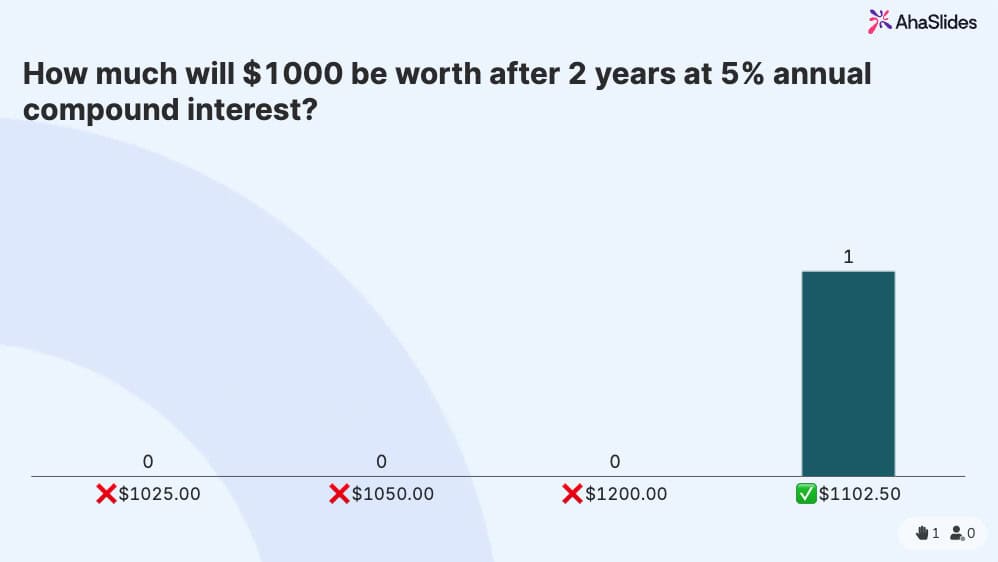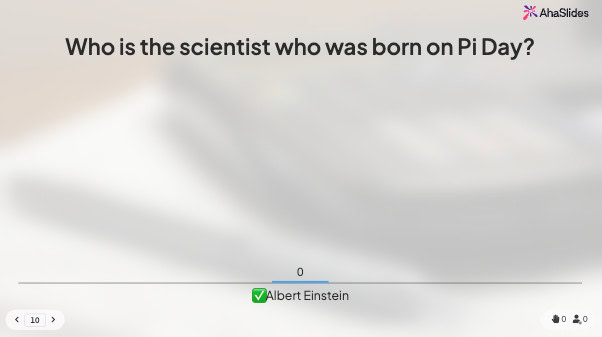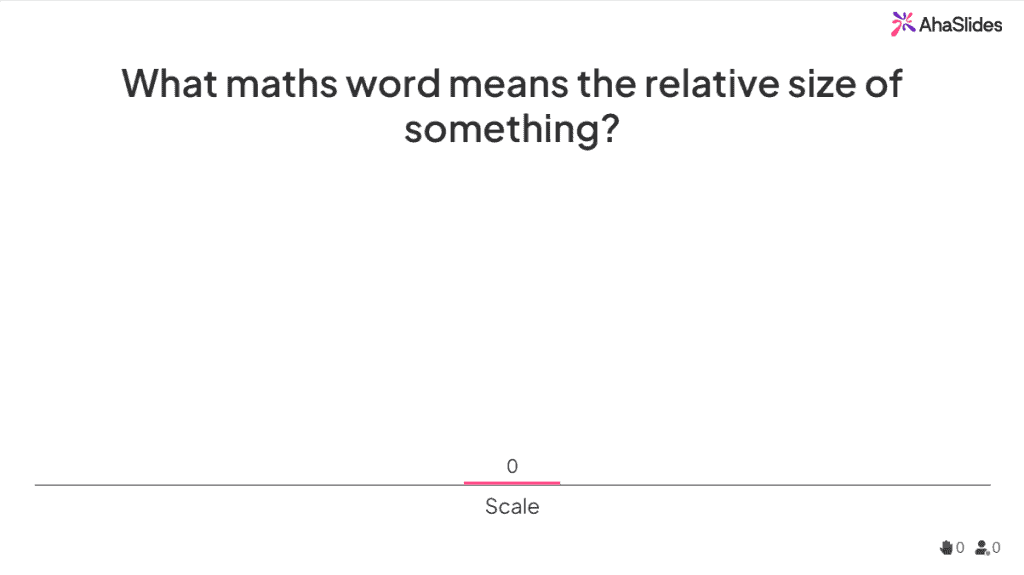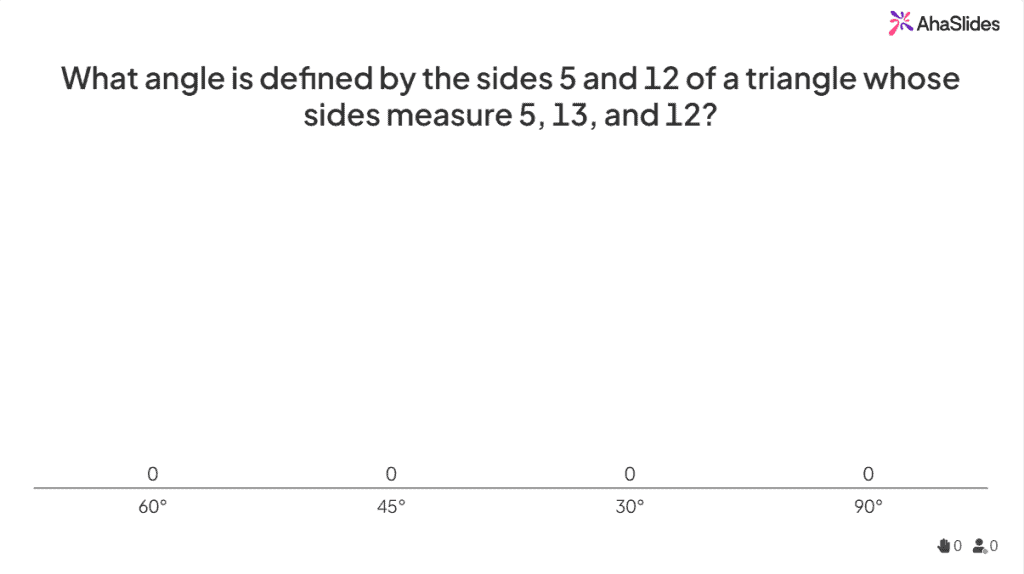Mathematics can be exciting, especially if you make it a quiz.
We have compiled a list of kids' trivia questions to provide them with a fun and informative math lesson.
These fun math quiz questions and games will entice your child to solve them. Stay with us till the end for a walk-through on how to organise it in the easiest way possible.
Table of Contents
Easy Math Quiz Questions
These math quiz questions also serve as excellent diagnostic tools, helping identify areas that need more attention while celebrating existing strengths. They are easy enough for the kids to solve while boosting numerical confidence and laying a solid foundation for more advanced mathematical concepts.
Kindergarten & Grade 1 (Ages 5-7)
1. Count the objects: How many apples are there if you have 3 red apples and 2 green apples?
Answer: 5 apples
2. What comes next? 2, 4, 6, 8, ___
Answer: 10
3. Which is bigger? 7 or 4?
Answer: 7
Grade 2 (Ages 7-8)
4. What is 15 + 7?
Answer: 22
5. If the clock shows 3:30, what time will it be in 30 minutes?
Answer: 4:00
6. Sarah has 24 stickers. She gives 8 to her friend. How many does she have left?
Answer: 16 stickers
Grade 3 (Ages 8-9)
7. What is 7 × 8?
Answer: 56
8. 48 ÷ 6 = ?
Answer: 8
9. What fraction of a pizza is left if you eat 2 slices out of 8?
Answer: 6/8 or 3/4
Grade 4 (Ages 9-10)
10. 246 × 3 = ?
Answer: 738
11. $4.50 + $2.75 = ?
Answer: $7.25
12. What is the area of a rectangle that is 6 units long and 4 units wide?
Answer: 24 square units
Grade 5 (Ages 10-11)
13. 2/3 × 1/4 = ?
Answer: 2/12 or 1/6
14. What is the volume of a cube with sides of 3 units?
Answer: 27 cubic units
15. If the pattern is 5, 8, 11, 14, what is the rule?
Answer: Add 3 each time
Free Math Quiz Templates
Looking for middle and high school math quizzes? Create an AhaSlides account, download these templates and host them with your audience for free~
General Knowledge Math Questions
Test your math intelligence with these mixtures of general knowledge math trivia.
1. A number that does not have a numeric of its own?
Answer: Zero
2. Name the only even prime number?
Answer: Two
3. What is the perimeter of a circle also called?
Answer: The Circumference
4. What is the actual net number after 7?
Answer: 11
5. 53 divided by four is equal to how much?
Answer: 13
6. What is Pi, a rational or irrational number?
Answer: Pi is an irrational number
7. Which is the most popular lucky number between 1-9?
Answer: Seven
8. How many seconds are there in one day?
Answer: 86,400 seconds
Answer: There are 1000 millimetres in just one litre
10. 9*N is equal to 108. What is N?
Answer: N = 12
11. An image that can also be seen in three dimensions?
Answer: A hologram
12. What comes before Quadrillion?
Answer: Trillion comes before the Quadrillion
13. Which number is considered a 'magical number'?
Answer: Nine
14. Which day is Pi Day?
Answer: March 14
15. Who invented the equals to '=" sign?
Answer: Robert Recorde
16. Initial name for Zero?
Answer: Cipher
17. Who were the first people to make use of Negative numbers?
Answer: The Chinese
Mathematical History Quiz
Since the beginning of time, math has been used, as shown by the ancient structures that still stand today. Let's look at this math quiz questions and answers about the wonders and history of mathematics to expand our knowledge.
1. Who is the father of Mathematics?
Answer: Archimedes
2. Who discovered Zero (0)?
Answer: Aryabhatta, AD 458
3. The average of the first 50 natural numbers?
Answer: 25.5
4. When is Pi Day?
Answer: March 14
5. Who wrote "Elements," one of the most influential mathematics textbooks ever?
Answer: Euclid
6. Who is the theorem a² + b² = c² named after?
Answer: Pythagoras
7. Name the angles greater than 180 degrees but less than 360 degrees.
Answer: Reflex Angles
8. Who discovered the laws of the lever and pulley?
Answer: Archimedes
9. Who is the scientist who was born on Pi Day?
Answer: Albert Einstein
10. Who discovered Pythagoras' Theorem?
Answer: Pythagoras of Samos
11. Who discovered the Symbol Infinity"∞"?
Answer: John Wallis
12. Who is the father of Algebra?
Answer: Muhammad ibn Musa al-Khwarizmi
13. What part of a Revolution have you turned through if you stand facing west and turn clockwise to face South?
Answer: ¾
14. Who discovered ∮ the Contour Integral sign?
Answer: Arnold Sommerfeld
15. Who discovered the Existential Quantifier ∃ (there exists)?
Answer: Giuseppe Peano
17. Where did the "Magic Square" originate?
Answer: Ancient China
18. Which film is inspired by Srinivasa Ramanujan?
Answer: The Man Who Knew Infinity
19. Who invented "∇" the Nabla symbol?
Answer: William Rowan Hamilton
Quick Fire Mental Math
These questions are designed for rapid-fire practice to build computational fluency.
Arithmetic Speed Drills
1. 47 + 38 = ?
Answer: 85
2. 100 - 67 = ?
Answer: 33
3. 12 × 15 = ?
Answer: 180
4. 144 ÷ 12 = ?
Answer: 12
5. 8 × 7 - 20 = ?
Answer: 36
Fraction Speed Drills
6. 1/4 + 1/3 = ?
Answer: 7/12
7. 3/4 - 1/2 = ?
Answer: 1/4
8. 2/3 × 3/4 = ?
Answer: 1/2
9. 1/2 ÷ 1/4 = ?
Answer: 2
Percentage Quick Calculations
10. What is 10% of 250?
Answer: 25
11. What is 25% of 80?
Answer: 20
12. What is 50% of 146?
Answer: 73
13. What is 1% of 3000?
Answer: 30
Number Patterns
Answer: 162
14. 1, 4, 9, 16, 25, ___
Answer: 36 (perfect squares)
15. 1, 1, 2, 3, 5, 8, ___
Answer: 13
16. 7, 12, 17, 22, ___
Answer: 27
17. 2, 6, 18, 54, ___
Answer: 162
Math Intelligence Test
These problems are designed for students who want to push their mathematical thinking to the next level.
1. A father is currently 4 times as old as his son. In 20 years, he will be twice as old as his son. How old are they now?
Answer: Son is 10, Father is 40
2. What is the smallest positive integer that is divisible by both 12 and 18?
Answer : 36
3. In how many ways can 5 people sit in a row?
Answer: 120 (formula: 5! = 5 × 4 × 3 × 2 × 1)
4. How many ways can you choose 3 books from 8 books?
Answer: 56 (formula: C(8,3) = 8!/(3! × 5!))
5. Solve: 2x + 3y = 12 and x - y = 1
Answer: x = 3, y = 2
6. Solve: |2x - 1| < 5
Answer: 2 < x < 3
7. A farmer has 100 feet of fence. What dimensions of a rectangular pen will maximise the area?
Answer: 25 ft × 25 ft (square)
8. A balloon is being inflated. When the radius is 5 feet, it's increasing at 2 ft/min. How fast is the volume increasing?
Answer: 200π cubic feet per minute
9. Four prime numbers are arranged in ascending order. The sum of the first three is 385, while the last is 1001. The most significant prime number is—
(a) 11
(b) 13
(c) 17
(d) 9
Answer: B
10 The sum of terms equidistant from the beginning and end of an A.P. is equal to?
(a) The first term
(b) The second term
(c) The sum of the first and last terms
(d) Last term
Answer: C
11. All natural numbers and 0 are called the _______ numbers.
(a) whole
(b) prime
(c) integer
(d) rational
Answer: A
12. Which is the most significant five-digit number exactly divisible by 279?
(a) 99603
(b) 99882
(c) 99550
(d) None of these
Answer: B
13. If + means ÷, ÷ means –, – means x and x means +, then:
9 + 3 ÷ 5 – 3 x 7 = ?
(a) 5
(b) 15
(c) 25
(d) None of these
Answer : D
14. A tank can be filled by two pipes in 10 and 30 minutes, respectively, and a third pipe can empty in 20 minutes. How much time will the tank fill if three pipes are opened simultaneously?
(a) 10 min
(b) 8 min
(c) 7 min
(d) None of these
Answer : D
15 . Which of these numbers is not a square?
(a) 169
(b) 186
(c) 144
(d) 225
Answer: B
16. What is its name if a natural number has precisely two different divisors?
(a) Integer
(b) Prime number
(c) Composite number
(d) Perfect number
Answer: B
17. What shape are honeycomb cells?
(a) Triangles
(b) Pentagons
(c) Squares
(d) Hexagons
Answer : D
Moving Forward
Mathematics education continues to evolve, incorporating new technologies, pedagogical approaches, and understanding of how students learn. This question collection provides a foundation, but remember:
- Adapt questions to your specific context and curriculum
- Update regularly to reflect current standards and interests
- Gather feedback from students and colleagues
- Continue learning about effective mathematics instruction
Bringing Math Quizzes to Life with AhaSlides
Want to transform these math quiz questions into interactive lessons full of life and fun? Try AhaSlides to deliver math content by creating engaging, real-time quiz sessions that boost student participation and provide instant feedback.
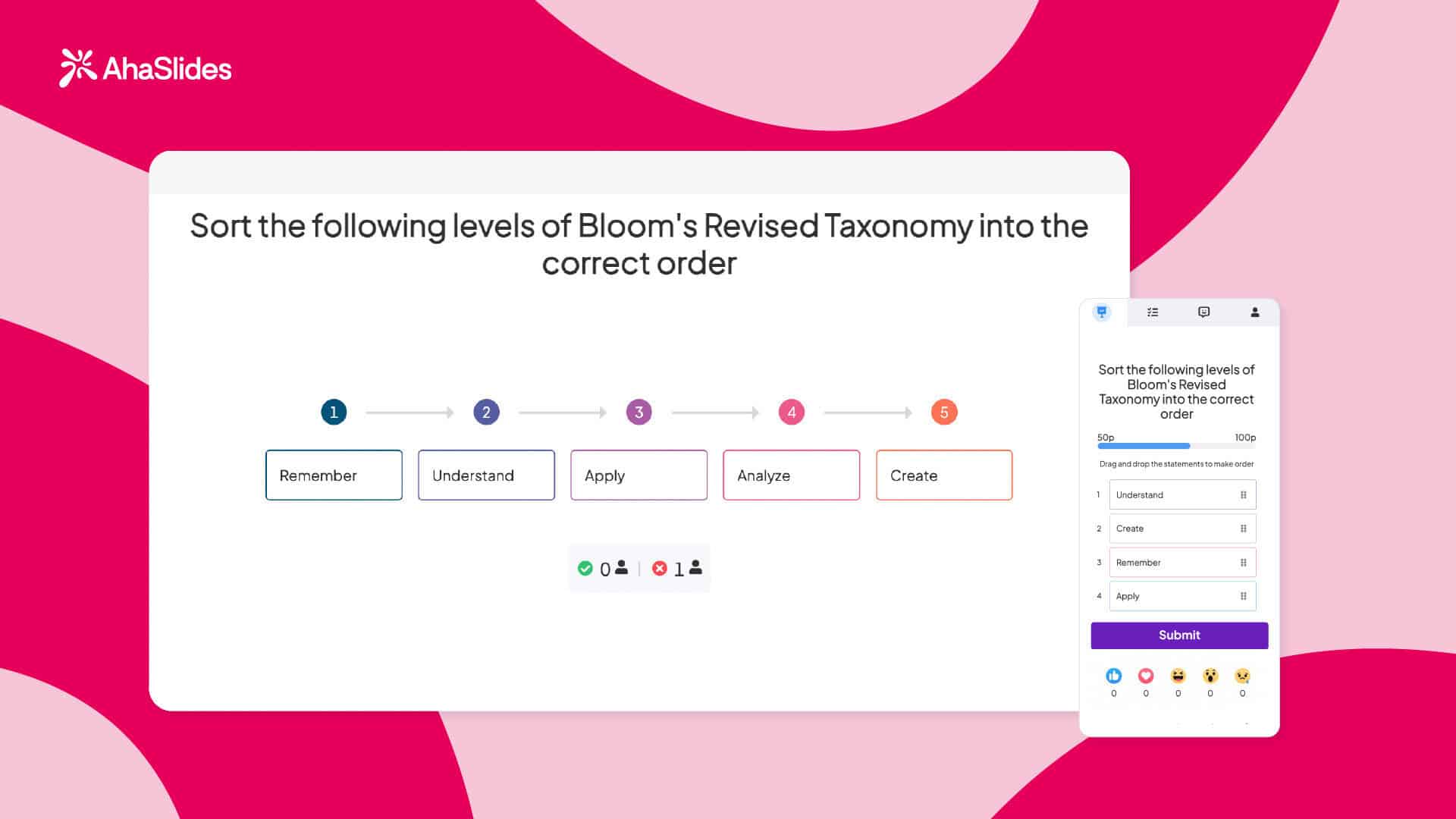
How you can use AhaSlides for math quizzes:
- Interactive engagement: Students participate using their own devices, creating an exciting game-like atmosphere that transforms traditional math practice into competitive fun
- Real-time results: Watch comprehension levels instantly as colourful charts display class performance, allowing you to identify concepts that need reinforcement immediately
- Flexible question formats: Seamlessly incorporate multiple choice, open-ended responses, word clouds for brainstorming math strategies, and even image-based geometry problems
- Differentiated learning: Create different quiz rooms for various skill levels, allowing students to work at their appropriate challenge level simultaneously
- Progress tracking: Built-in analytics help you monitor individual and class-wide progress over time, making data-driven instructional decisions easier than ever
- Remote learning ready: Perfect for hybrid or distance learning environments, ensuring all students can participate regardless of location
Pro tip for educators: Start your math class with a 5-question AhaSlides warm-up using questions from the appropriate grade level section. The competitive element and immediate visual feedback will energise your students while providing you with valuable formative assessment data. You can easily adapt any question from this guide by simply copying it into AhaSlides' intuitive question builder, adding multimedia elements like diagrams or graphs to enhance understanding, and customising the difficulty based on your students' needs.
